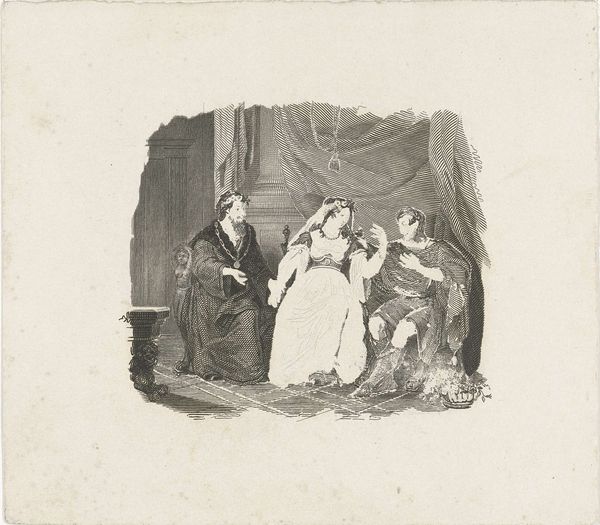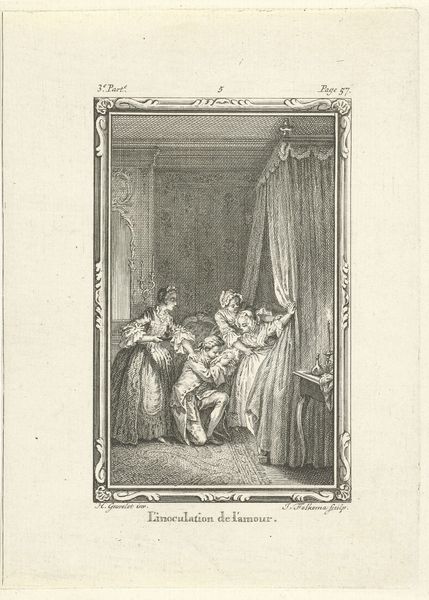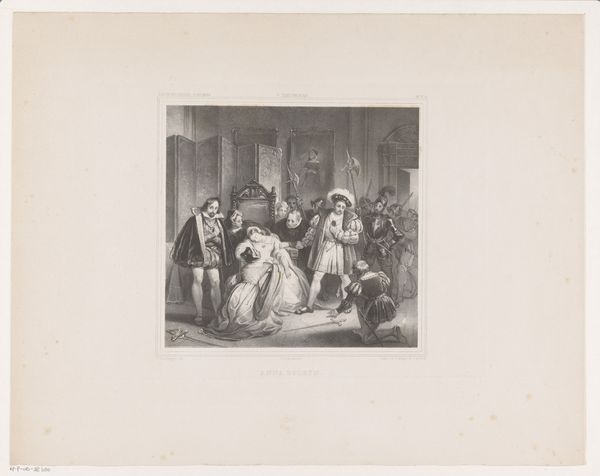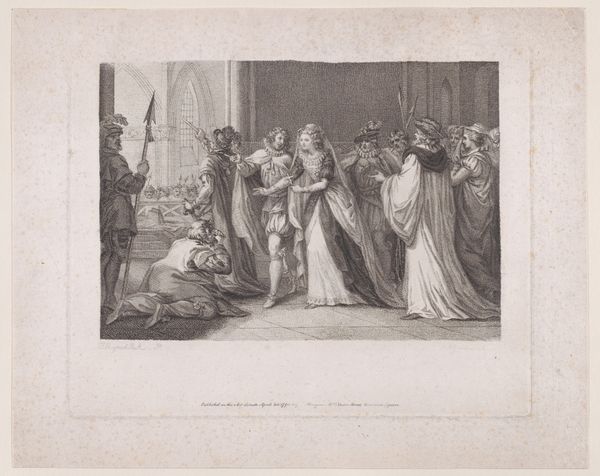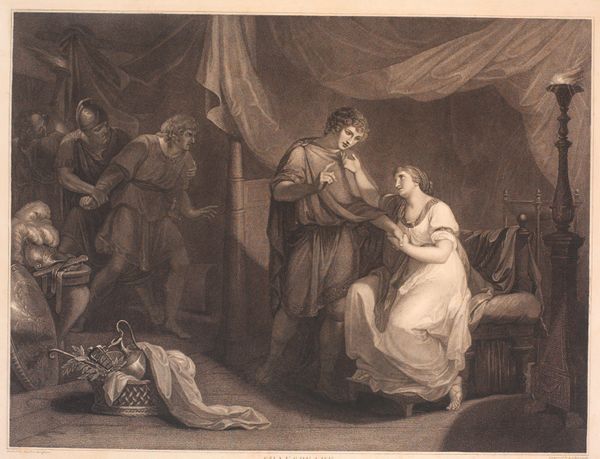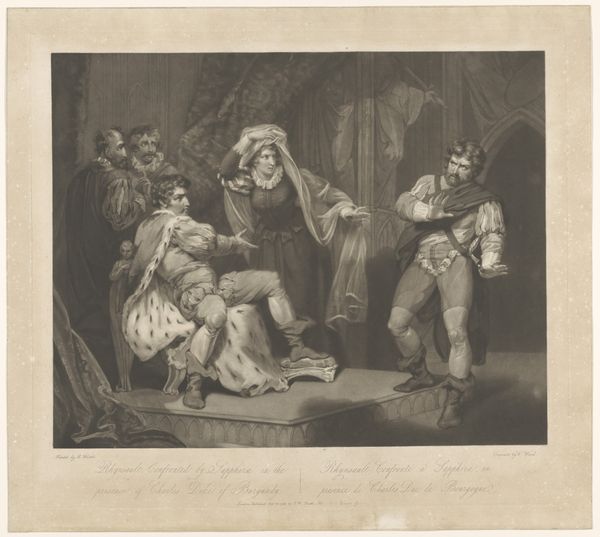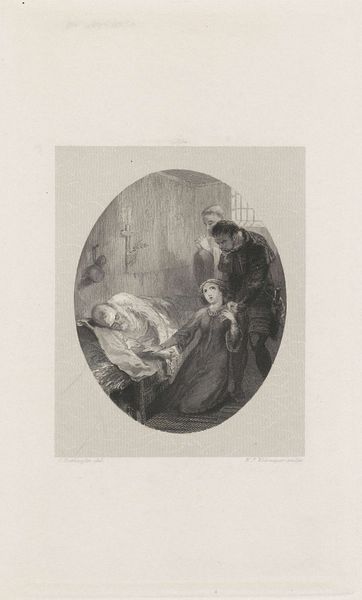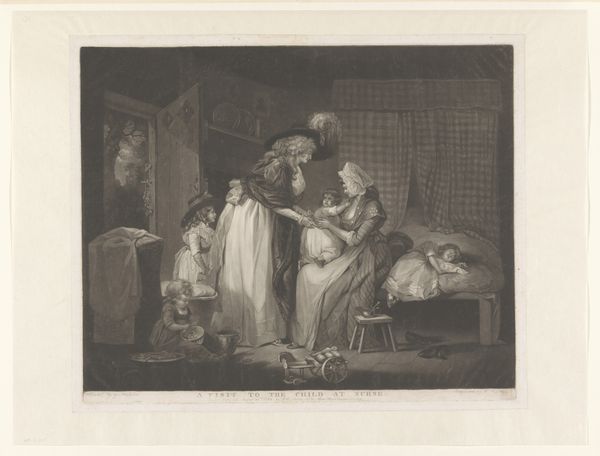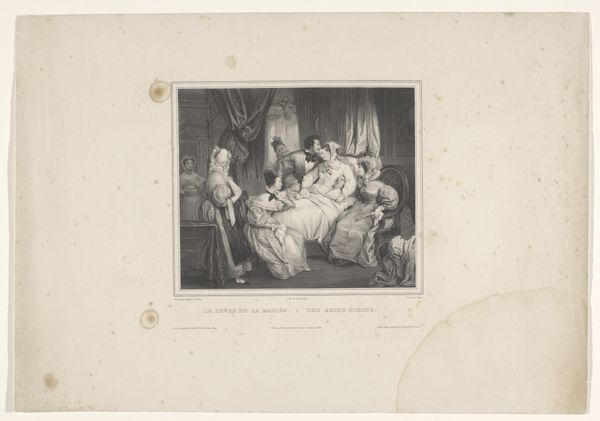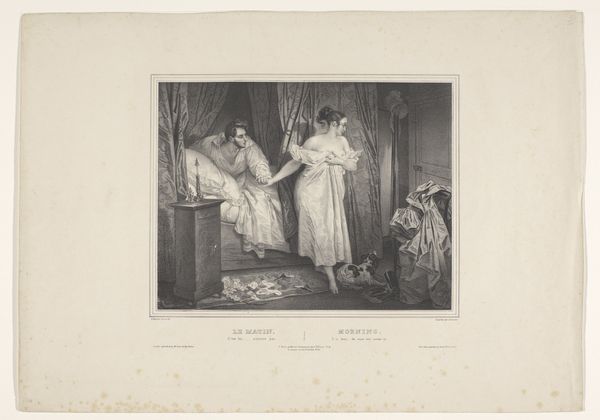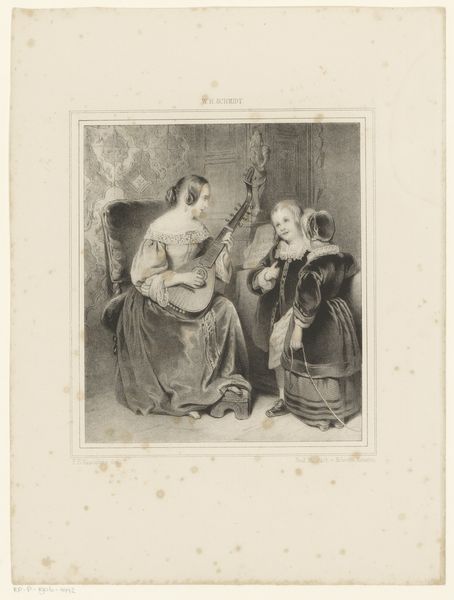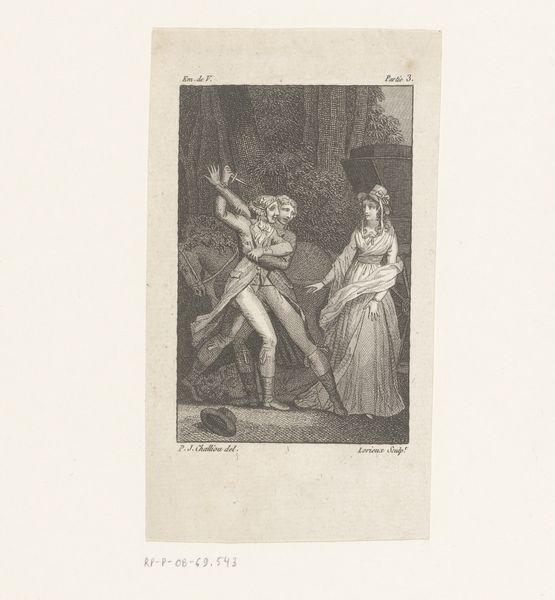
Vrouw zittend tussen haar vader en haar (toekomstige) man 1830 - 1845
0:00
0:00
engraving
#
narrative-art
#
old engraving style
#
figuration
#
romanticism
#
history-painting
#
engraving
Dimensions: height 115 mm, width 130 mm
Copyright: Rijks Museum: Open Domain
Artist: Good morning. Or afternoon. Whenever you might be tuning in…I’m just captivated by the mood here. There’s a sort of suspended moment, a question hanging in the air. The light’s odd too; everything feels evenly lit, yet cloaked somehow, secretive, you know? Art Historian: It does feel rather heavy, and secretive, doesn’t it? I am drawn to the central arrangement of figures—we're looking at a 19th-century engraving called "Vrouw zittend tussen haar vader en haar (toekomstige) man"—A Woman Seated Between Her Father and Her (Future) Husband by Henricus Wilhelmus Couwenberg from around 1830 to 1845. It resides here at the Rijksmuseum. It speaks volumes about traditional family dynamics. Artist: Ah, family. That word covers such a breadth of love and expectations, doesn't it? Her dress feels deliberately simple, while everyone else is adorned. Is she an object in an arrangement? An observer in her own drama? Art Historian: Interesting reading, I’d say that all are key participants—but look at the garlands. Her floral crown contrasts with the laurel wreath worn by her father—a classic symbol of wisdom and authority. But in ancient cultures, it symbolizes the achievement of emperors. Her “future” husband also seems adorned but differently with a simpler crown of victory; notice his legs—he wears the short military boots favored in imperial Rome. In ancient Greece, brides often wore flower crowns and bridal veils, but it strikes me the wreath signals something greater than simple devotion. Artist: So it's almost like a prize being handed off between conquerors... yikes. Poor woman—she does look a tad overwhelmed. It does feel more allegorical than about flesh and blood people—perhaps about nations making arrangements for the future. Does that ring true? Art Historian: The symbolic echoes are certainly present. We have cultural ideals represented, that is without doubt! Look at how deliberately placed they are within what seems to be their domicile or royal compound. What’s missing? I am almost sure the narrative will continue to be interpreted given shifts in thinking about the place and position of women across multiple cultures and contexts. Artist: And I feel grateful for that. Art endures to be constantly reassessed, reinterpreted... because ultimately it's about revealing something about us, isn't it? To know how people felt in that era is amazing in its self. To appreciate the technique as an engraver, even more! It feels timeless and timely, as many masters do. Art Historian: Exactly. Every gaze at an image returns with a transformed, evolved version of us. Thanks to H. W. Couwenberg for capturing and immortalizing what, at that moment, society held sacred!
Comments
No comments
Be the first to comment and join the conversation on the ultimate creative platform.
